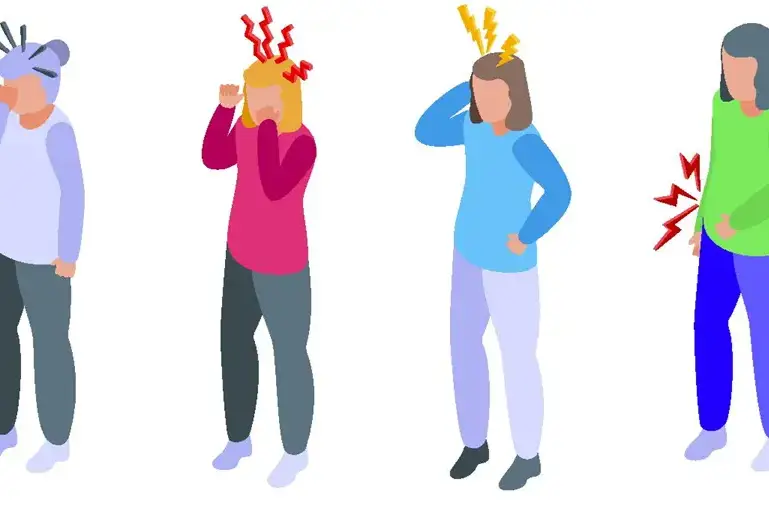Are you suffering from sacroiliac joint pain? If so, a Denver chiropractor may have the solution you’ve been searching for. Specifically, an integrative chiropractor can provide many different types of SI treatments. Integrative chiropractors use non-invasive and drug-free approaches proven to help individuals experiencing discomfort in the sacroiliac (SI) joint.
Chiropractic care focuses on addressing the root cause of the problem rather than just treating the symptoms. We will restore proper alignment and movement to the SI joint by using gentle adjustments to reduce pain and promote healing. It is also vital to consult with an experienced chiropractor to ensure you are getting your problem properly diagnosed. SI and lumbar problems can often present with similar symptoms but require different treatments to provide fast relief.
The SI joint plays a crucial role in connecting the spine to the pelvis. When it becomes inflamed or misaligned, it can lead to pain and discomfort in the lower back, hips, and legs. Chiropractic care can help alleviate these symptoms by restoring balance and optimizing joint function.
Whether your SI joint pain is due to an injury, pregnancy, or a chronic condition, chiropractic care offers a natural and practical approach to relieve your discomfort. Don’t let SI joint pain hold you back from enjoying life to the fullest. Consult a Denver chiropractor specializing in SI joint pain to see how they can make a difference in your journey toward pain-free living.
Table of Contents
ToggleUnderstanding Sacroiliac Joint Pain
The sacroiliac joint is in the lower back, where the sacrum (the triangular bone at the base of the spine) connects to the pelvis. It is crucial in providing stability and transmitting forces between the upper body and the legs. When the SI joint becomes inflamed or misaligned, it can lead to pain and discomfort in the lower back, hips, and legs.
Causes of Sacroiliac Joint Pain
A variety of factors can cause SI joint pain. Injuries such as falls, car accidents, or sports-related trauma can disrupt the alignment of the SI joint, resulting in pain. Pregnancy is also a common cause of SI joint pain. Hormonal changes loosen the ligaments surrounding the joint to prepare for childbirth. Additionally, conditions such as arthritis or degenerative joint disease can cause inflammation and stiffness in the SI joint, leading to discomfort.
Symptoms of Sacroiliac Joint Dysfunction
SI joint pain can manifest in different ways, and the symptoms may vary from person to person. Some common signs of SI joint pain include:
- Lower back pain: Discomfort in the lower back, typically on one side, is a common symptom of SI joint dysfunction.
- Hip pain: Pain can radiate from the SI joint to the hip and groin area, making it difficult to perform daily activities.
- Leg pain: SI joint pain can cause sciatica symptoms, such as discomfort in the buttocks and thighs, which can even radiate down to the knees.
- Limited mobility: Stiffness or a feeling of “locking” in the SI joint can restrict movement and make it challenging to walk or stand for extended periods.
If you experience any of these symptoms, it is essential to consult with a healthcare professional, such as a chiropractor in Denver, for an accurate diagnosis and appropriate treatment.
How Chiropractic Can Relieve Sacroiliac Joint Pain
Chiropractic care offers a holistic approach to treating sacroiliac joint pain. Instead of solely focusing on alleviating symptoms, chiropractors aim to address the underlying cause of the pain. They use manual adjustments and manipulations to restore proper alignment and movement to the SI joint.
During a chiropractic session, the chiropractor will thoroughly evaluate the root cause of your SI joint pain. They may ask about your medical history, perform a physical examination, and request imaging tests if necessary. This comprehensive approach allows them to tailor the treatment plan to your specific needs.
Chiropractic Techniques for Treating Sacroiliac Joint Pain
Depending on the individual’s condition and preferences, chiropractors employ various techniques to treat sacroiliac joint pain. These techniques may include:
- Spinal adjustments: Chiropractors use their hands or specialized tools to apply controlled force to the SI joint, gently realigning it and restoring proper function.
- Mobilization: This technique involves gentle movements and stretches to improve joint mobility and reduce pain.
- Soft tissue therapy: Chiropractors may use massage or other manual techniques to relieve muscle tension and promote healing in the surrounding tissues.
- Exercise and stretching: Chiropractors may recommend specific exercises and stretches to strengthen the muscles supporting the sacroiliac joint and improve flexibility.
The choice of technique will depend on the chiropractor’s assessment and the individual’s unique needs. Chiropractic care is known for its gentle and non-invasive approach, making it a safe option for individuals with sacroiliac joint pain.
Benefits of Chiropractic Care for Sacroiliac Joint Pain
Chiropractic care offers several benefits for individuals suffering from SI joint pain. Some advantages include:
- Non-invasive and Drug-free: Chiropractic care provides a natural alternative to pain medication and invasive procedures, reducing the risk of side effects and complications.
- Individualized Treatment: We will tailor your treatment plan to your specific needs, ensuring a personalized approach to pain relief.
- Addressing the Root Cause: Chiropractic care focuses on correcting the underlying issue rather than just managing the symptoms, leading to long-term relief.
- Improved Joint Function: Chiropractic care optimizes joint function and reduces pain by restoring proper alignment and movement to the SI joint.
- Holistic Approach: Chiropractors consider the whole body when treating SI joint pain, addressing any imbalances or dysfunctions that may contribute to the condition.
These benefits make chiropractic care an attractive option for individuals seeking relief from SI joint pain without resorting to taking medications that mask the pain or dangerous surgeries that rarely provide lasting relief.
What to Expect During a Chiropractic Session for Sacroiliac Pain
When you choose Integrative Health and Rehabilitation to treat your sacroiliac joint pain, here’s what you can expect:
- Evaluation: First, we will learn about your medical history and how your injury or condition began. Next, we will perform a physical examination. We may also take digital X-rays to assess the condition of your SI joints and lumbar spine.
- Treatment plan: Based on what we find during your exam, we will discuss the best way to treat your SI injury and get you out of pain as quickly as possible.
- Adjustments: Chiropractic adjustments gently restore motion to fixed segments of the spine. When done correctly, Chiropractic SI adjustments restore motion to fixed or Subluxated spinal bones. You may hear popping or cracking sounds, which are simply nitrogen gas and joint fluid interacting, much like the noise you hear when someone “cracks” their knuckles.
- Additional therapies: Depending on your condition, we may incorporate other therapies such as Acupuncture, Dry Needling, Laser Therapy, or Shockwave Therapy to maximize the effectiveness of your treatment.
- Home care instructions: We partner with Physitrack.com to provide all our patients with exercise and stretching videos that can be done at home. Our patients must participate in their care, helping maintain the benefits of treatment between sessions.
When our practice members have questions about their care or injuries, we are happy to discuss any concerns or questions they may have throughout the treatment process.
Other Types of Therapy Sacroiliac Joint Pain Relief
While chiropractic care is highly effective in relieving SI joint pain, other integrative chiropractic therapies can further enhance your recovery and provide additional relief. These therapies can work with chiropractic adjustments to promote healing and prevent future painful episodes. Here are some of the most common complementary therapies for SI joint pain relief:
- Dry Needling: Dry needling can be an invaluable tool in the recovery process for SI joint pain. Needling areas of muscle spasm and restriction improves range of motion and reduces pain. Electrical stimulation can be incorporated with Dry Needling to reduce muscle spasms and relieve pain.
- Shockwave Therapy (Extracorporeal Shock Wave Therapy (ESWT): ESWT involves using high-energy shockwaves to create microtrauma over the treatment area. This might sound counterintuitive, but this controlled trauma triggers the body’s natural healing response. The body responds to this microtrauma by increasing blood flow and releasing substances that promote tissue repair and reduce inflammation in the sacroiliac joint.
- Acupuncture: Acupuncture is an ancient Chinese practice that involves the insertion of thin needles into specific points in the body. This technique can help restore balance to the body’s energy flow, reducing pain and promoting healing. Many individuals find acupuncture to be a highly effective complementary therapy for SI joint pain.
- Yoga/stretching: Yoga can improve joint stability and flexibility, reduce pain, and prevent future injuries. Working with a qualified yoga instructor who can guide you through appropriate poses and modifications for your specific needs is essential.
By incorporating these complementary therapies into your treatment plan, you can maximize the benefits of your visits with a Chiropractor in Denver and enhance your overall recovery.
Lifestyle Changes to Prevent Flares of SI Joint Pain
In addition to chiropractic care and complementary therapies, specific lifestyle changes can help prevent the recurrence of SI joint pain. Making minor adjustments to your daily routine and habits can reduce stress on the SI joint and promote long-term healing. Here are some lifestyle changes to consider:
- Maintain a healthy weight: Excess weight can strain the SI joints, causing pain and discomfort. Maintain a healthy weight with proper diet and exercise to reduce joint stress and minimize SI joint pain.
- Practice good posture: Poor posture puts undue stress on the SI joints and contributes to SI pain. Wa your posture throughout the day, especially when sitting or standing for long periods. Use ergonomic chairs and supportive cushions to maintain proper spinal alignment.
- Engage in regular exercise: Regular exercise is essential for maintaining joint health and preventing SI joint pain. Focus on exercises that strengthen the core, hips, and glutes. These are the muscles that provide support and stability to the SI joint. Consult with a fitness professional to develop a safe and effective exercise routine.
- Avoid repetitive movements: Repetitive movements can strain the SI joint and lead to pain. Whenever possible, alternate tasks and take frequent breaks to avoid overloading the joint.
- Use proper body mechanics: When lifting or carrying heavy objects, it is vital to use good form to prevent injury to the SI joint. Bend at the knees, engage your core muscles, and lift with your legs rather than your back. Avoid twisting or jerking motions that can strain the joint.
- Use Pelvic Blocks to manage your SI pain: You can use Pelvic Blocks to manage your SI pain at home. Order pelvic blocks online and have them delivered right to your door! They are easy to use if you follow these simple pelvic block instructions.
Implement these lifestyle changes to promote SI joint health and reduce the likelihood of future pain and discomfort.
Conclusion: Relieve SI Pain With Chiropractic Care
Integrative chiropractic care offers a natural and practical approach to finding relief from SI joint pain. Chiropractic addresses the root cause of SI joint pain. We can relieve SI joint pain by restoring proper alignment and function to the SI joint.
In addition to chiropractic adjustments, complementary integrated chiropractic treatments can further enhance recovery and provide additional relief. These therapies work with chiropractic care to promote healing and prevent future episodes of SI pain.
Furthermore, making specific lifestyle changes can help prevent the recurrence of SI joint pain. Maintain a healthy weight, practice good posture, and get regular exercise. These habits and avoiding repetitive movements will reduce stress on the SI joint, promoting long-term healing.
Looking for a Chiropractor in Denver? Still have questions? Contact us! Still not sure? Please read some of our 5-Star Google reviews and see why we are the affordable Chiopractic clinic Denver seeks for fast, effective, and lasting pain relief. We’ve been helping patients in Arvada, Denver, and Wheat Ridge, Colorado, for over 20 years. Learn more about the conditions we treat on our Health Articles page. Ready to start feeling better? Book an appointment online!

Ready for an expert opinion? Get in touch today!
With a legacy of more than 25 years, our team specializes in helping individuals triumph over back pain, neck discomfort, and persistent headaches, all without relying on addictive medications or risky surgical procedures.





